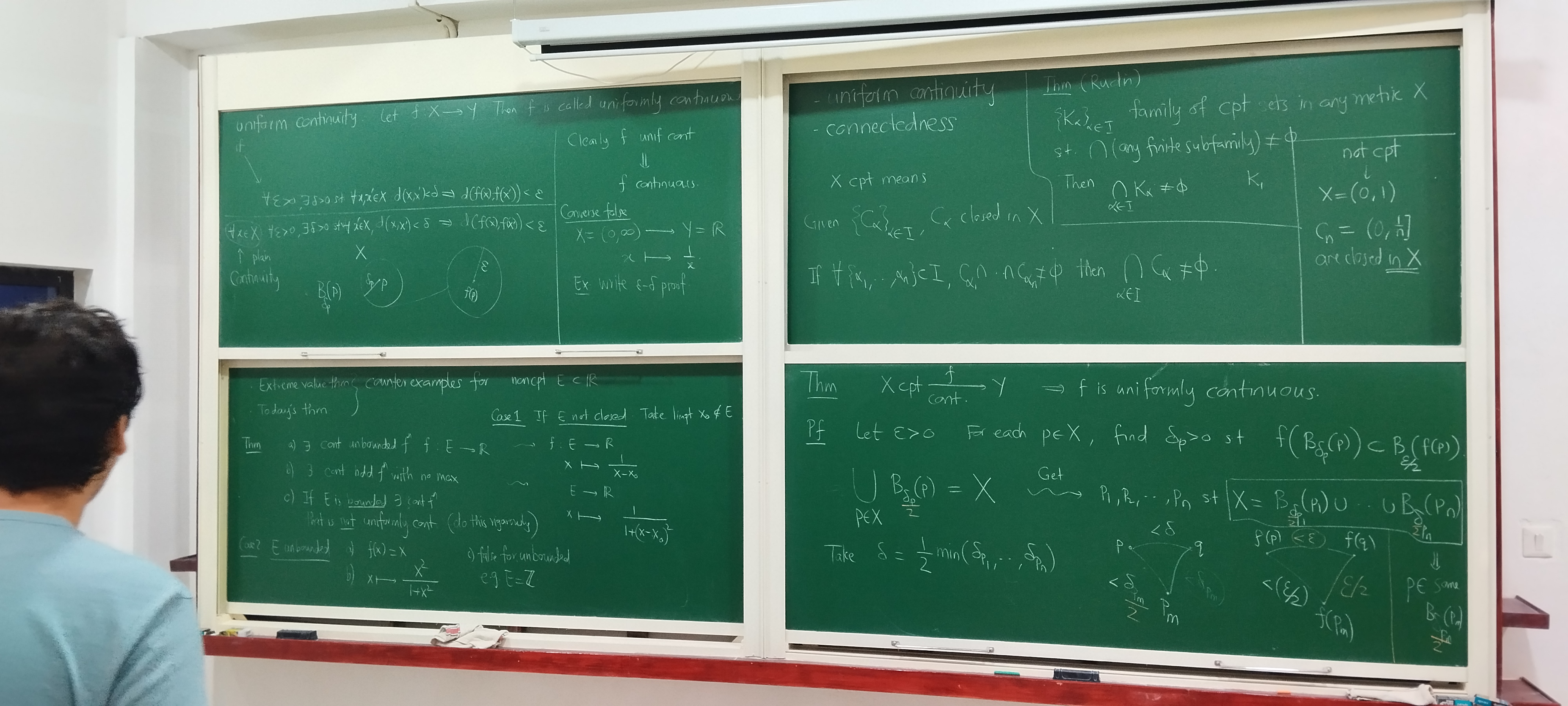
To do:
- uniform continuity
- connectedness
Recall
Definition of open cover compactness.
Uniform continuity
Recall the definition of a continuous function:
Definition 1.
Let . is continuous on if
Compare with definition of uniform continuity:
Definition 2.
Let . is uniformly continuous on if
Things to note:
- Uniform continuity implies continuity, but the converse is generally not true. Consider , as a counterexample. The converse is true, if is compact, as we will prove.
- Continuity is a local phenomenon; you only need to look in a (potentially very tiny) neighborhood of and to check if an challenge can be met. Uniform continuity requires you to analyze the function over its entire domain.
- The definition for uniform continuity can be rephrased like so:
is uniformly continuous if , such that if for some , then .
Continuous functions defined on compact sets are uniformly continuous
Rudin, 4.19
Theorem 3.
Let be compact, be continuous. Then, is uniformly continuous.
Proof
Let be arbitrary. To show that is uniformly continuous, we have to produce a such that implies . Since is continuous, we can find for every such that . Note that the setis an open cover of . Since is compact, must have a finite subcover
Let . Consider , in with . Now, must be in for some . Thus, . Triangle inequality gives us . Thus, . This implies , i.e, . ❏
Theorems that fail when X is not compact
Let be a continuous function. Let be compact. The extreme value theorem tells us that attains a maximum and minimum value, and the previous theorem tells us that is uniformly continuous.
We will now show that these theorems do not hold when is not compact.
We know from the Heine Borel theorem that in , compact closed and bounded.
Also, if does not attain a maximum or minimum, it is either unbounded, or is bounded and does not contain its supremum and infimum.
Rudin, 4.20
Theorem 4.
Let be non compact.
- continuous unbounded .
- continuous bounded with no maximum value.
- If is bounded, continuous that is not uniformly continuous
Note that the statement 3 with being unbounded is false. For example, take . Any function defined on is continuous, and also uniformly continuous (take ).
Proof of 1
Note that in all the following examples is continuous since restrictions of continuous functions are continuous.
is not closed, is not bounded: , where and is a limit point of .
is not bounded, is not bounded: . ❏Proof of 2
is not closed, does not contain its supremum/infimum: , where and is a limit point of .
is not bounded, does not contain its supremum/infimum: . ❏Proof of 3
Since is not compact, we know has an infinite set with no limit point in . But, since is bounded, it is contained in a closed interval , and so is . Since closed intervals in are compact, must have a limit point . It follows that is also limit point of . Now, define , and we are done. ❏